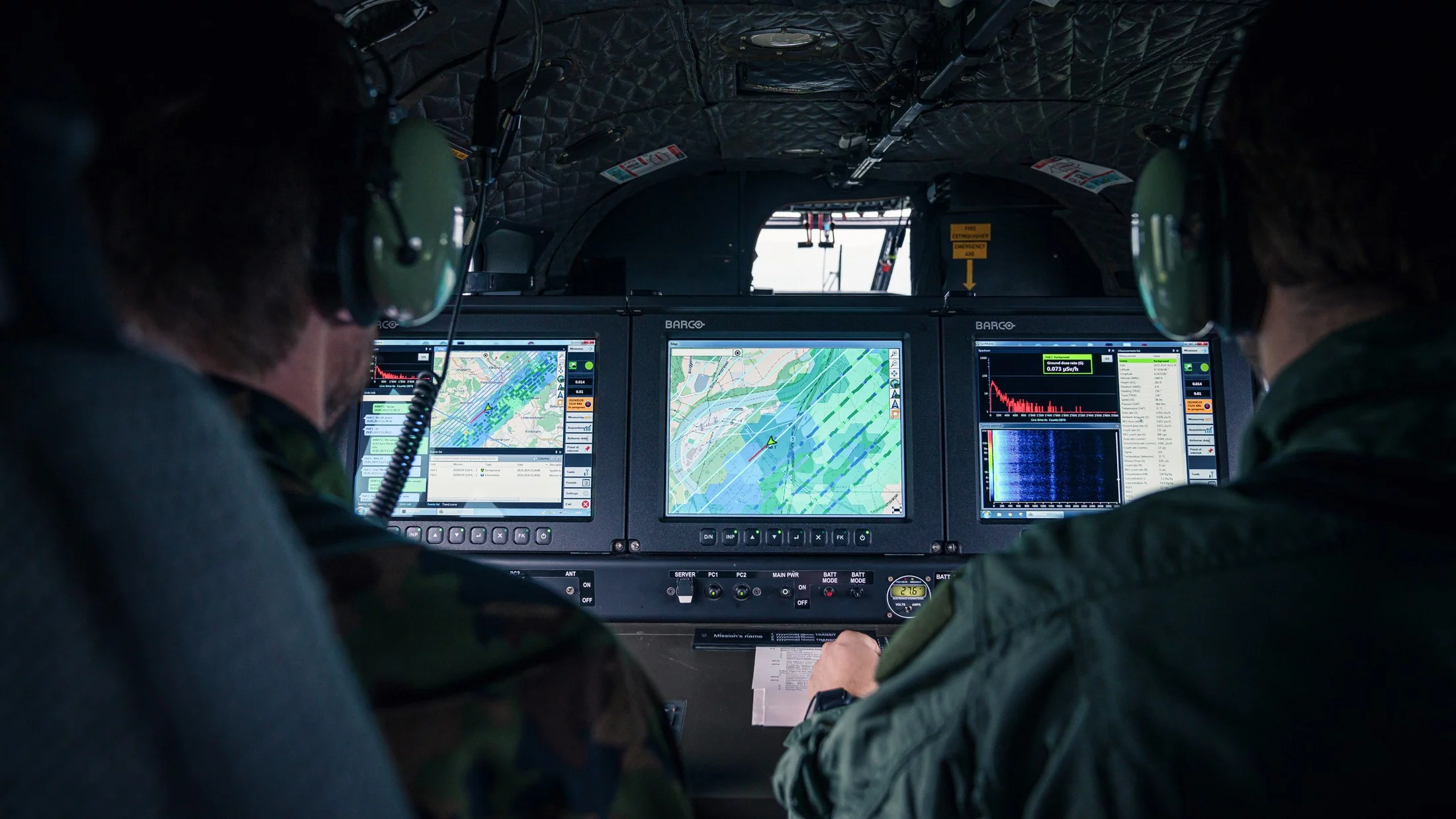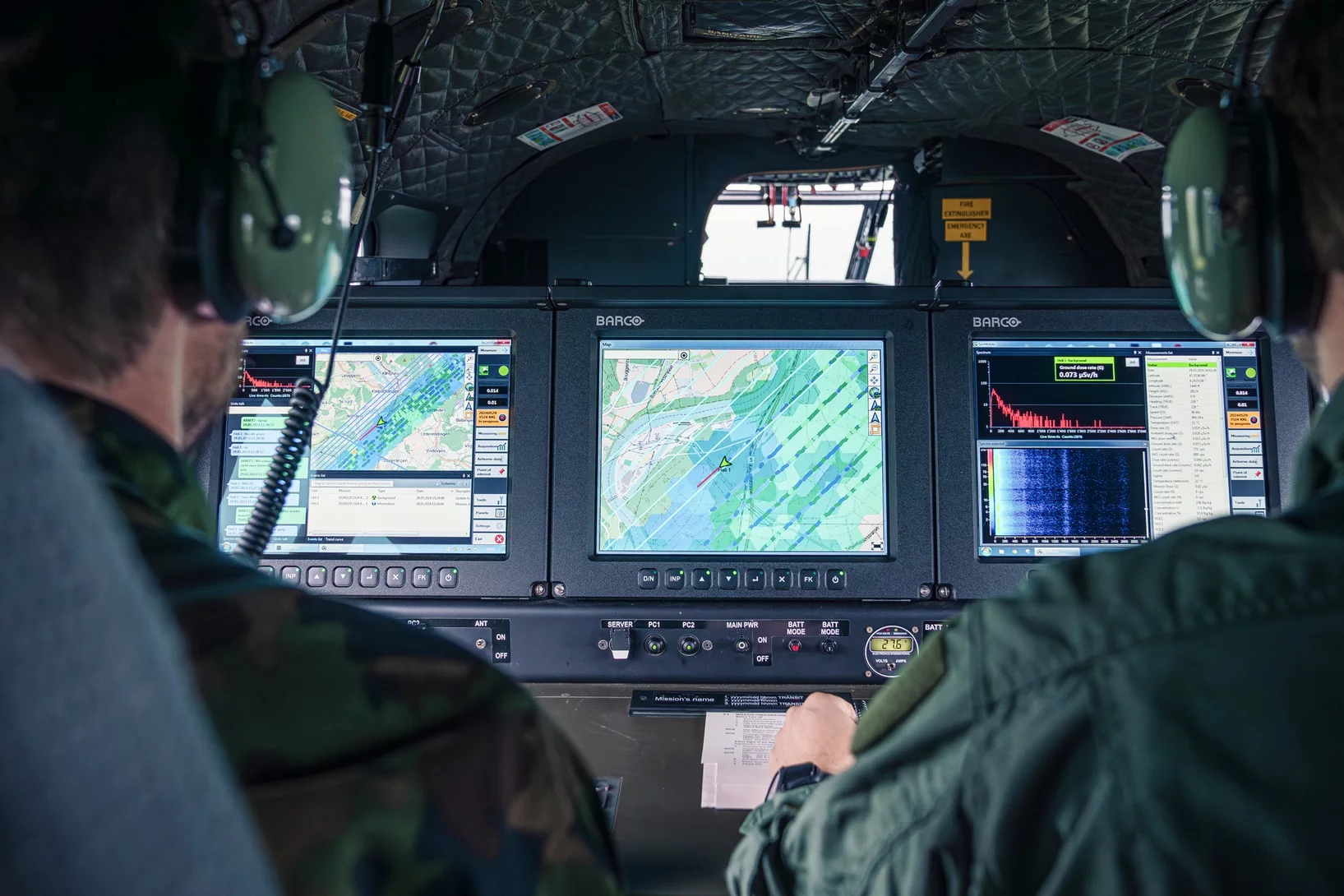A highly sensitive detector, a Super Puma helicopter, and a clever software algorithm – how researchers at the Paul Scherrer Institute PSI detect radioactive sources on the ground from the air in collaboration with the National Emergency Operations Centre (NEOC) and other partners.
What is an unremarkable canister of de-icing salt doing in a physics laboratory? David Breitenmoser explains: “The de-icing salt is potassium chloride, which contains the radioactive isotope potassium-40 – but the intensity of the radiation is very low.” The physicist wants to use the de-icing salt to demonstrate the capabilities of a very special detector. This high-precision device is used not in a laboratory but in the belly of a Super Puma helicopter operated by the Swiss Air Force, where it detects radioactivity from the air.
PSI researchers use four such identical detectors to carry out the annual aeroradiometry measurements in collaboration with the National Emergency Operations Centre (NEOC) and other partners, to assess the radiological situation in Switzerland. This includes measuring natural background radiation levels and monitoring the environment around nuclear facilities. Such measuring flights can cover an area of about one hundred square kilometres in three hours. This permits an efficient deployment, for example in the event of an incident at a nuclear power plant or an accident involving radioactive materials during transport or industrial operations. Hence, aeroradiometry makes an important contribution to protecting the civilian population.
In the flying laboratory
When carrying out aeroradiometry measurements, the Super Puma flies at a height of ninety metres above the ground and monitors an area with a radius of around three hundred metres. The challenges are enormous. In addition to the high altitude and the comparatively small surface area of the detector, the signal is also attenuated by the Earth’s atmosphere so that only a fraction of the radiation actually reaches the detector. “That’s why this instrument has to be so sensitive,” explains David.
The detector allows researchers to determine not only the type but also the amount of radioactive material – at least in theory. In practice, it has to be accurately calibrated. “Normally, we would do this by spreading known radionuclides across a large area, flying over them and measuring how the detector responds responds to the radiation. But nobody wants to do that, of course,” says the physicist.
Calibrating on the computer
David Breitenmoser is developing a complex computer model that will allow him to deduce the amount of the radioactive material from the signal without having to use radioactive samples. With this he will be able to model how the detector responds to different factors. For example, what happens to the signal if the photon hits the detector at a different angle? Or if the source is not a single point, but a larger surface? How do the prevailing air pressure or the nature of the terrain affect the signal?
All these details must be taken into account in the simulation, and this makes the calculations extremely time-consuming. “It takes about a day to run a simulation on our mainframe computer here at PSI. If we wanted to calibrate our detector for every possible scenarios, we’d have to run more than a million simulations. That adds up to more than 1000 years of simulation time.”
To reduce the simulation time and make the calculations possible, David has come up with a clever trick. He splits the problem into two separate simulations. “By simulating the possible detector signals and the environmental factors separately and only combining them at the end, we are able to reduce the computational effort by a factor of 10 to the power of 6, in other words we are a million times faster than before,” explains David.
David was able to carry out the necessary calculations as part of his doctoral thesis at PSI, which was funded by the Swiss Federal Nuclear Safety Inspectorate ENSI, among others. Thanks to his trick, it is possible to run all the necessary simulations, which would normally take 1000 years, in just over two weeks. Using an ordinary laptop, he and his team can determine how the detector will respond to a radioactive source. An initial field test has demonstrated that the new system works. In theory, it could even be used to determine the amount of salt on winter roads.
Original Publication
-
Breitenmoser D, Cerutti F, Butterweck G, Kasprzak MM, Mayer S
Emulator-based Bayesian inference on non-proportional scintillation models by compton-edge probing
Nature Communications. 2023; 14(1): 7790 (12 pp.). https://doi.org/10.1038/s41467-023-42574-y
DORA PSI


